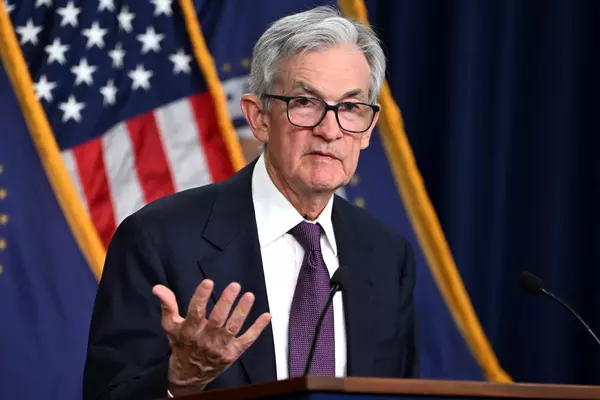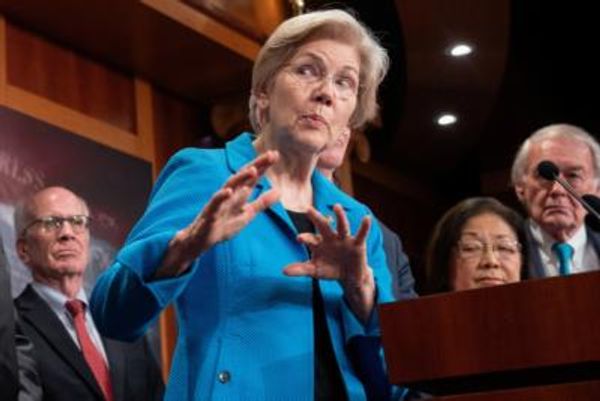
In the Western Hemisphere, 1994 was the year of trade. The United States, Mexico, and Canada integrated their economies by inking the North American Free Trade Agreement (NAFTA), and the United States held the first Summit of the Americas with the objective of striking a hemisphere-spanning trade deal (the so-called Free Trade Area of the Americas). Over a quarter century later, the recent U.S.-Mexico-Canada Agreement (USMCA) has modernized and replaced NAFTA, but the broader free trade agenda in the Western Hemisphere has stalled. In 2021, the United States will once again host the triennial Summit of the Americas—and it must put free trade squarely back on the agenda.
For Washington, it is not always obvious why the Americas (aside from neighboring Canada and Mexico) deserve its focus in matters of trade. The region has struggled to grow at the rapid pace seen in other developing regions. The GDPs of the other countries of the hemisphere, including Canada and Mexico, barely add up to one-third of the United States’. The grand prize for U.S. trade negotiators has always been a large multilateral trade deal with Asia and, to a lesser extent, with Europe.
Yet those targets seem further and further off. Even beyond the limitations of the Trump administration, a possible European trade deal will remain entangled in disagreements over defense spending and Europe’s recent propensity to aggressively regulate U.S. technology firms. And in Asia, the United States forwent the opportunity for a grand bargain when the Trump administration scrapped the Trans-Pacific Partnership (TPP) in just its first weeks in power. Even if a Biden administration were to revive the TPP immediately—there may be too much water under the bridge for that to happen—the deal may be insufficient by itself to position the United States to compete with China, which is not a TPP signatory. At best, the deal would allow the United States to match China’s recently concluded Regional Comprehensive Economic Partnership (RCEP) with countries of the Association of Southeast Asian Nations and many close U.S. allies, such as Australia and Japan. From their inception, the TPP and RCEP were rivals, and in many ways the United States would be returning to the scene too late.
That leaves the Americas to play a prominent role in U.S. grand trade strategy. The United States draws invaluable strength from a prosperous, integrated, and largely democratic hemisphere. But the country needs to deepen its engagement quickly to avoid potential (and permanent) defeat. China is already the largest trading partner for many countries in Latin America and the Caribbean, lending it influence that extends well beyond trading relationships. Even two countries that trade as prolifically with the United States as Mexico and Canada have been reluctant to follow the U.S. lead on Huawei, for example. President-elect Joe Biden, therefore, needs to (re)assess the place of the Americas in U.S. grand strategy and consider the ways in which a broad free trade agreement would augment the relationship.
When the United States hosts the Summit of the Americas next year, there is reason to believe it can avoid the tragic errors and detours of its past engagement with Latin America and the Caribbean. On Sept. 11, 2001, the Inter-American Democratic Charter was signed in Lima, Peru, a high-minded agreement that declared that the “peoples of the Americas have a right to democracy and their governments have an obligation to promote and defend it.” While free trade was supposed to be the natural follow-on to the ambitious agreement on democracy promotion in the region, other events intervened. The expanding U.S. campaigns in the Middle East and Afghanistan were a powerful distraction, for example, and eventually even gave democracy promotion a bad reputation. But it is time to resuscitate the spirit of previous engagement.
Conditions in the region are more amenable than ever. In the early days of the millennium, strong voices against global trade pilloried the idea of a hemispheric free trade deal. The proposed Free Trade Area of the Americas was the target of vocal, frequent, and concerted protests. Fatefully, Brazil positioned itself as the ringleader of countries opposed to the proposal; American unilateralism in other parts of the world did not help, raising suspicions of U.S. maximalism in Latin America and the Caribbean. Latin American countries displayed little desire to play ball with the United States, and the Americas began to look toward Asia and Europe.
However, changing dynamics in world trade and shifting geopolitics make a hemispheric free trade agreement less of a far-fetched possibility than in the previous era. The Biden administration should appreciate that Brazil, principle adversary to the proposed Free Trade Area of the Americas, has shifted its stance dramatically. There is much to lament about how Brazilian President Jair Bolsonaro conducts policy, but it is clear that his administration wants to open Brazil’s economy and integrate it with the world. An approach that focuses solely on punishing Bolsonaro for his poor environmental policies and a problematic record on human rights risks missing a critical opportunity for the entire hemisphere.
Further, the USMCA demonstrates that the United States can push for free trade with a populist leader—in this case, Mexico’s President Andrés Manuel López Obrador—while simultaneously earning enforceable guarantees on environmental protections and stricter labor standards, which Biden’s Democratic Party would look to secure. Indeed, free trade deals moving forward will likely include strenuous provisions on labor and the environment, allowing trade specialists to become agenda-setters in policy areas that were largely foreclosed to them in previous eras of trade negotiations. Meanwhile, for climate policy advocates, nothing can amplify their concerns like the force of multilateral trade agreements that embed environmental agendas in actual practice.
If Ottawa and Mexico City would welcome greater integration with other regional economies to balance the United States, and if Brasília is newly open to joining in, many other capitals would have good reasons to come to the party. Chile, already a member of the TPP’s successor agreement and a country undergoing its most concerning political instability in decades, could champion any initiative that upholds its trajectory of hemispheric and global integration. The other Pacific Alliance members, Colombia and Peru, could also welcome an initiative that realizes their cooperative ambitions, ones increasingly shared by their neighbor Ecuador and by Uruguay. If conceived comprehensively, the trade negotiations could also draw other countries with democratic yet less U.S.-friendly governments into the conversation.
Although a comprehensive Asian trade deal may remain the biggest prize, one of the most foundational deals for U.S. grand strategy would be an agreement in its own shared neighborhood. The United States can curtail the influence of strategic rivals in its own hemisphere while also charting a course that “nearshores” supply chains and firms up regional trade. Further, countries in Latin America and the Caribbean do not wish for the kind of military engagement with the United States that is commonplace in East Asia, the Middle East, or even Europe. In a post-pandemic era of likely reduced defense budgets, Washington should see the attraction in that.
In recent years, while headlines have screamed of trade wars and isolationism, Americans have come to appreciate anew the benefits of U.S. engagement with the world. According to Gallup, there is a sizable, growing constituency for trade amongst the American public. While by themselves such numbers do not dictate U.S. policy, they should certainly guide it.
For the rest of the Americas, meanwhile, the attraction is clear. A free trade deal would be a chance to piggyback on what remains the world’s most potent and versatile economy. Nearshoring and supply-chain integration will be critical to Latin America and the Caribbean’s own post-pandemic revitalization, given the profundity of its expected economic contraction. Beyond this, integration provides the Americas with an opportunity to make their concerns heard by the United States.
In the first two decades of the 21st century, hemispheric free trade has lacked the salience of America’s long wars in the Middle East, or even attempts at trans-Pacific and trans-Atlantic trade agreements. This should change dramatically under a Biden administration. The first sign of whether the new administration is serious about hemispheric free trade will be whether it leverages the upcoming Summit of the Americas to place the issue at the center of the agenda. Another signal would be a clear call for Congress to extend the administration’s Trade Promotion Authority, which allows the president to pursue trade agreements, beyond its current expiry date in mid-2021.
Ignoring trade in the Americas would be a fateful error, especially when the United States is contemplating the prospects of partial economic decoupling from China. The Americas should demonstrate that the region retains an ambition for greater economic integration—and that these ambitions remain, at the very least, hemispheric.







